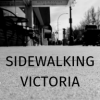
Victoria's built form and construction
#1

Posted 11 June 2008 - 04:40 PM
Know it all.
Citified.ca is Victoria's most comprehensive research resource for new-build homes and commercial spaces.
#2

Posted 12 June 2008 - 07:38 AM
Why? Because there's a lot of heavy breathing around building booms and overbuilding, and even about existing buildings getting torn down (although I can't think of any examples downtown). It's a subject that candidates can use to get voter attention, and many people repeat what they hear without checking the facts or using their eyes.
Having a "before & after" gallery would be really interesting -- as would having some hard data around building occupancy, buyer data (out of towners, locals) the increase in retail, filled restaurants, that sort of thing.
#3

Posted 12 June 2008 - 07:46 AM
Even though the Wave isn't the nicest building does anyone rmember when it was just ABC Electic and the Video store in that block? Ick
Some before and after pics would be good and if we catch a candidate making a statement about the good ole days post it here too!
#4

Posted 12 June 2008 - 10:46 AM
be exact.
#5

Posted 12 June 2008 - 11:15 AM
...does anyone rmember when it was just ABC Electic and the Video store in that block? Ick
Don't forget the little used car lot.
#6

Posted 23 September 2008 - 01:16 PM
John Farquharson said he's running because 'what is getting done at city hall isn't enough and it takes way too long. We need a new way of doing business.'
Farquharson said council members are polarized. Better collaboration is needed to make progress on goals.
With the development boom ebbing, the city has a perfect opportunity to consult with citizens and come up with a vision for Victoria that is three generations out.
That plan should be used to guide every decision at council, Farquharson said.
'It doesn't have to move a mile. Inch by inch, it will collectively add up to make it happen.'
Two other notable things.. as a Gonzales Neighbourhood advocate he helped create the 2003 Greenways Plan, and supported legalizing Secondary Suites.
Oscar Wilde (1854 - 1900), The Picture of Dorian Gray, 1891
#7

Posted 23 September 2008 - 01:46 PM
#8

Posted 30 September 2008 - 10:06 AM
The Concerned Citizens' Coalition released its new 10 point 'Recovery Plan Victoria 2008' on September 21, 2008.
It is available now for public perusal at the Concerned Citizens' Coalition Weblog ('CCC Blog'), found at: http://gregoryhartnell.wordpress.com/.
Point No. 6 in the Recovery Plan Victoria 2008 addresses issues pertaining to Victoria's built environment, as follows:
'6. CONTROL ZONING ANARCHY: NINE STOREY HEIGHT RESTRICTIONS, OPEN COUNCIL MEETINGS, NEIGHBOURHOOD PLANS INTEGRATED WITH CITY PLAN
'Downtown highrise limit should be reduced to a human scale of nine storeys; the residential neighbourhood midrise limit should not exceed four storeys.
'Victoria City Council meetings, and particularly those dealing with controversial land use decisions, should be held at reasonable hours, and should be as open and transparently accountable as often as possible.
'Secret Star Chamber-like 'in camera' meetings should be reduced to an absolute minimum.
'Abolish 10 year tax holidays for favoured new developments downtown. Phase out existing tax holidays.
'Victoria City Council must consult with neighbourhood associations and other concerned citizens to revise neighbourhood plans.
'Prohibit demolition or conversion of affordable rental housing to strata condos.
'Require a mix of subsidized affordable rental housing, market rental housing and investment strata condos to be provided in all new mid- and large-scale housing developments in Victoria.
'Ban casinos in the City of Victoria.'
- Gregory Hartnell, President
Concerned Citizens' Coalition
CCC
#9

Posted 30 September 2008 - 10:23 AM
#10

Posted 30 September 2008 - 10:37 AM
#11

Posted 30 September 2008 - 12:08 PM
Sounds like a disaster for the city in ten years. We cannot create plans that have a timeline for enforcement that reaches beyond our ability to understand the needs of the city at that time. If there are provisions for variances then it may work.
Yeah, I agree. I think its a great idea to have a plan, but it can't be for three generations. It should be reevaluated every 5 years or so. 5 years of a bad plan isn't long enough to "ruin" any given neighbourhood, but still enough time that developers can know what they are planning towards.
#12
 Guest_Marcat_*
Guest_Marcat_*
Posted 30 September 2008 - 12:23 PM
CCC
The Concerned Citizens' Coalition released its new 10 point 'Recovery Plan Victoria 2008' on September 21, 2008.
It is available now for public perusal at the Concerned Citizens' Coalition Weblog ('CCC Blog'), found at: http://gregoryhartnell.wordpress.com/.
Point No. 6 in the Recovery Plan Victoria 2008 addresses issues pertaining to Victoria's built environment, as follows:
'6. CONTROL ZONING ANARCHY: NINE STOREY HEIGHT RESTRICTIONS, OPEN COUNCIL MEETINGS, NEIGHBOURHOOD PLANS INTEGRATED WITH CITY PLAN
'Downtown highrise limit should be reduced to a human scale of nine storeys; the residential neighbourhood midrise limit should not exceed four storeys.
'Victoria City Council meetings, and particularly those dealing with controversial land use decisions, should be held at reasonable hours, and should be as open and transparently accountable as often as possible.
'Secret Star Chamber-like 'in camera' meetings should be reduced to an absolute minimum.
'Abolish 10 year tax holidays for favoured new developments downtown. Phase out existing tax holidays.
'Victoria City Council must consult with neighbourhood associations and other concerned citizens to revise neighbourhood plans.
'Prohibit demolition or conversion of affordable rental housing to strata condos.
'Require a mix of subsidized affordable rental housing, market rental housing and investment strata condos to be provided in all new mid- and large-scale housing developments in Victoria.
'Ban casinos in the City of Victoria.'
- Gregory Hartnell, President
Concerned Citizens' Coalition
CCC
Ah...I'm glad to see that the CCC wants to completely kill the City of Victoria and create second rate downtown office and residential space. I understand by CCC's anti-height stance that they are full hearted supporters of urban sprawl? and the continued demolition of green spaces for more low-rise affordable living then? Perhaps an increase in complexes such as the former Blanshard Courts are in the development and city plan that the CCC has? would you care to comment on how by restricting heights of buildings under the CCC's "plan" would also deter urban sprawl?...
#13

Posted 30 September 2008 - 03:02 PM
reduced to a human scale of nine storeys
Human scale? What does that mean?
#14

Posted 30 September 2008 - 03:24 PM
It's easy to discuss urban form using only height limits. It takes intestinal fortitude to take it a step further where opinion actually becomes meaningful and useful.
What about density? When we talk about height limits are we merely lopping off the tops of towers?
Are we scaling down the building proportionately?
Or are we squashing the same density into a blockier cube?
If it's #1 or #2, how is this supposed to achieve urban density forecasts? Where are the displaced people supposed to live?
If it's #3, what about the views that are eliminated? Podium towers have achieved acclaim for providing needed density while preserving views and giving downtowns a distinct low-rise feel. What about livability? Have you been to Paris? Much of Paris is under ten storeys but they pay a heavy price in livability. Apartments are dark and lack privacy and cross-ventilation. Many of the streets are like canyons. When romantics think of Paris they recall the broad boulevards and huge circular plazas--none of which we have.
Anyway, I've been asking this question for three years and no-one has the guts to answer it.
#15

Posted 30 September 2008 - 04:08 PM
A city plan that looks thirty to even fifty years into the future has merit because it if is done right, it can set the long term vision of the city. And I mean the whole city and not just neighbourhoods - ideally I would say the whole region but I am not convinced that there is a body that could take on this sort of a planning process.
With large scale and extensive community engagement you can begin a process that gives definition to the realm within which a vision for the city could exist.
I remember Vancouver's CityPlan process in the early 1990s. It started with an event called an Ideas Fair. Everyone how had any ideas for what the city should look like could have a table and present their ideas to the public. Along with the market place of ideas (which included a guy advocating the planting of a lot of palm trees) there was a cultural and social aspect to the Ideas Fair, through the use of something like one would see at a storytelling festival, the organizers had people tell the story of the city through their own experiences.
As you go along you test and refine ideas, concepts and thoughts that come out of the process to build towards a plan that is the vision for the city.
This plan would not define the neighbourhood plans, but it bring in issues of city wide concern, visions for the future and common context and language of the city. I would almost describe the bigger plan being something akin to cascading style sheets in web design.
In case you are wondering, this is something I have been thinking about for a long time but I have not yet articulated.
#16

Posted 30 September 2008 - 05:17 PM
^Human scale means whatever anyone wants it to mean. It's a weasel word.
It's easy to discuss urban form using only height limits. It takes intestinal fortitude to take it a step further where opinion actually becomes meaningful and useful.
What about density? When we talk about height limits are we merely lopping off the tops of towers?
Are we scaling down the building proportionately?
Or are we squashing the same density into a blockier cube?
If it's #1 or #2, how is this supposed to achieve urban density forecasts? Where are the displaced people supposed to live?
If it's #3, what about the views that are eliminated? Podium towers have achieved acclaim for providing needed density while preserving views and giving downtowns a distinct low-rise feel. What about livability? Have you been to Paris? Much of Paris is under ten storeys but they pay a heavy price in livability. Apartments are dark and lack privacy and cross-ventilation. Many of the streets are like canyons. When romantics think of Paris they recall the broad boulevards and huge circular plazas--none of which we have.
Anyway, I've been asking this question for three years and no-one has the guts to answer it.
There's Victoria's climate to consider also. We don't seem to get tons of sunlight here, & if that's the case it wouldn't make sense to build low, wide buildings that block out the sun for most of the day. It might work in the Mediterranean area or somewhere like Osoyoos or Kelowna but I doubt that it would work here.
#17

Posted 30 September 2008 - 06:28 PM
To answer Robert's query, I would say, in effect, none of the above.
You assume that the aspiring developer always wants both; more density and height variances.
While that is certainly usually the case with development permit applications at Victoria City Hall, it is not always so.
With reasonable human-scale height limits in place, many of these requests for height variance would simply not come before Council.
Developers would learn to understand that it would be futile to even submit them to Council.
Assuming a density variance is at issue (but not necessarily a height variance), the same density as requested in the variance can usually be found in shorter human-scale buildings on downtown lots by building out to the property line as it abuts the sidewalk and adjacent property lines.
I am sorry I can't agree with you about Paris, either, Robert.
Paris is one of the most beautiful and well-designed cities in the world, and is one of the most popular tourist destinations anywhere.
I am quite sure that no tourist in his right mind goes to that great metropolis to take a gander at La Defense, the monstrously out-of-scale collection of skyscrapers that now mars the Montparnasse arrondissement.
'Human scale' means that one is still able to recognize a person standing on the top of the building from a street vantage point below.
But, seriously, to compare little old Victoria to the great French capital is frankly ridiculous, in my humble estimation. Apples and oranges...
- Gregory Hartnell, President
Concerned Citizens' Coalition
CCC
#18

Posted 30 September 2008 - 07:14 PM
CCC
'Human scale' means that one is still able to recognize a person standing on the top of the building from a street vantage point below.
- Gregory Hartnell, President
Concerned Citizens' Coalition
CCC
lol I imagine the worst nightmare of Victoria NIMBYs (whether they live downtown or not) would be a developer who:
- wants to build downtown,
- is in any way inspired by Vancouver, and
- only builds
It turns out that the wikipedia thing on human scale in architecture doesn't say a word about being able to clearly recognise a person on a building's roof from the ground. It doesn't make any reference whatsoever to an arbitrary number of stories (like, say, 4 or 9), or fsr, or height either:
http://en.wikipedia....iki/Human_scaleHuman scale in architecture
Humans interact with their environments based on their physical dimensions, capabilities and limits. The field of anthropometrics (human measurement) has unanswered questions, but it's still true that human physical characteristics are fairly predictable and objectively measurable. Buildings scaled to human physical capabilities have steps, doorways, railings, work surfaces, seating, shelves, fixtures, walking distances, and other features that fit well to the average person.
Humans also interact with their environments based on their sensory capabilities. The fields of human perception systems, like perceptual psychology and cognitive psychology, are not exact sciences, because human information processing is not a purely physical act, and because perception is affected by cultural factors, personal preferences, experiences, and expectations. So human scale in architecture can also describe buildings with sightlines, acoustic properties, task lighting, ambient lighting, and spatial grammar that fit well with human senses. However, one important caveat is that human perceptions are always going to be less predictable and less measurable than physical dimensions.
Human scale in architecture is deliberately violated:
* for monumental effect. Buildings, statues, and memorials are constructed in a scale larger than life as a social/cultural signal that the subject matter is also larger than life. The extreme example is the Rodina (Motherland) statue in Volgograd (Stalingrad).
* for aesthetic effect. Many architects, particularly in the Modernist movement, design buildings that prioritize structural purity and clarity of form over concessions to human scale. This became the dominant American architectural style for decades. Some notable examples among many are Henry Cobb's John Hancock Tower in Boston, much of I. M. Pei's work including the Dallas City Hall, and Mies van der Rohe's Neue Nationalgalerie in Berlin.
* to serve automotive scale. Commercial buildings that are designed to be legible from roadways assume a radically different shape. The human eye can distinguish about 3 objects or features per second. A pedestrian steadily walking along a 100-foot (30-meter) length of department store can perceive about 68 features; a driver passing the same frontage at 30 mph (13 m/s or 44 ft/s) can perceive about six or seven features. Auto-scale buildings tend to be smooth and shallow, readable at a glance, simplified, presented outward, and with signage with bigger letters and fewer words. This urban form is traceable back to the innovations of developer A. W. Ross along Wilshire Boulevard in Los Angeles in 1920.
... so in other words, buildings have human-scale elements which humans can interact with, such as stairs, doors, tables, etc. I suppose the whole building could be a human-scale element, but that isn't always very interesting. It also wouldn't be very interesting (or practical) if no parts of the building were at the human scale.
#19

Posted 30 September 2008 - 08:58 PM
Paris is one of the most beautiful and well-designed cities in the world, and is one of the most popular tourist destinations anywhere.
I am quite sure that no tourist in his right mind goes to that great metropolis to take a gander at La Defense, the monstrously out-of-scale collection of skyscrapers that now mars the Montparnasse arrondissement.
To each his own, perhaps?
I would personally be quite interested in seeing La Defense from up close and admiring some of the most famous post-modern skyscraper architecture in the world.
Know it all.
Citified.ca is Victoria's most comprehensive research resource for new-build homes and commercial spaces.
#20

Posted 30 September 2008 - 11:03 PM
Hartnell's vision of shorter, squatter buildings Downtown has direct ramifications on viewscapes and livability. It means sacrificing, but for what tangible benefit?
Planners say that there is a point where high-rise residents lose a connection with the street activity but they generally agree this happens beyond the 20 storey mark.
There is much more to Paris' charm than a height limit. We don't have the expansive plazas that make the chasm-like streetwalls livable. Walk in any direction in Paris and eventually you will come across the welcome relief of a huge open plaza where several streets come together.
Is the hulking eight-storey Belmont building more "human scaled" than the 14-storey Juliet building (a slender 10 storey tower that sits on a four-storey podium)?
Use the page links at the lower-left to go to the next page to read additional posts.
0 user(s) are reading this topic
0 members, 0 guests, 0 anonymous users

















